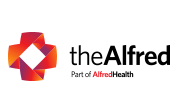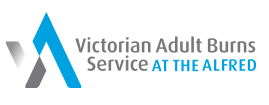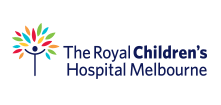Small superficial partial thickness burns on the face may be managed on an outpatient basis. Patients with more extensive facial burns are often appropriately admitted for pain relief and initial wound care. Superficial partial thickness burns will take about 7 to 10 days for healing to occur. These facial burns are best managed using an open method without dressings.
Method
- Wash hands with warm soapy water and dry with a clean towel.
- Clean face with mild, non-perfumed soap and water.
- Males should shave if necessary.
- Apply a layer of antimicrobial cream/ paraffin or gel onto the burn using a cotton swab, gauze or clean hand.
- Avoid getting the gel in the eyes or mouth.
- Apply a non perfumed moisturiser to adjacent, unaffected skin
- Stinging may occur when the gel is first applied. If the stinging continues stop using it and seek further medical advice.
Cleansing
It is important to wash the burn with mild soap and/or running water to remove residue & allow the skin to breathe prior to reapplication of cream. Using a clean flannel may assist with removal of debris and residual creams. This may be as often as two hourly: washing frequency can decrease as exudate decreases.
Shaving
Hair and hair follicles tend to harbour bacteria that can slow healing and precipitate infection. Therefore if it important to shave facial hair to reduce microbial load. Use a disposable razor or clippers to trim facial and scalp hair. Ensure hair is removed at least 2.5cm around the burn.
Application of creams
Hydrogels are useful for epidermal burns with intact skin, or in very minor superficial dermal burns.
Where the burn is predominantly superficial dermal, topical antimicrobials such as chloramphenicol ointment may be applied sparingly up to four times a day to burn areas on the face and neck as a thin layer. Antimicrobial agents minimize bacterial proliferation and fungal colonisation; however topical antimicrobials should only be used for a short time (usually 2-3 days) until healing is progressing and the wound is clean. Note that aplastic anaemia is a reported side effect of chloramphenicol, and has rarely occurred after topical usage.
Gel based products, liquid paraffin or Vaseline® should be used to keep the face wound moist and comfortable. This can be as often as two hourly to minimize crusting and facilitate crust removal.
It is important to remove all cream and exudates by regular cleansing and before reapplication.
Once epithelised, non perfumed hypoallergenic moisturiser should be used. Patients should be advised to contact their local doctor or visit the local emergency department if they experience increased pain, redness or fever.
Follow Up
Unless very minor, the burn should be reviewed within two to three days after initial treatment.
Any burn injury is a dynamic wound, and requires regular review to ensure healing is progressing.
Ensure a plan to review is in place prior to discharge.
Key Points
- A superficial facial burn will take 7 – 10 days to heal depending on how severe and deep the burn is.
- Prolonged healing times are associated with poor scarring outcomes
- If there is any doubt that a burn will be completely healed within 14 days, refer to a burns specialist
- Be aware of potential signs of infection, including increased pain and swelling, fever, apparent increased depth of burn, and surrounding cellulitis.
- Infected burns require swabbing for microscopy and culture, topical antimicrobial, and systemic antibiotics. Patients should be referred to a burns specialist.





